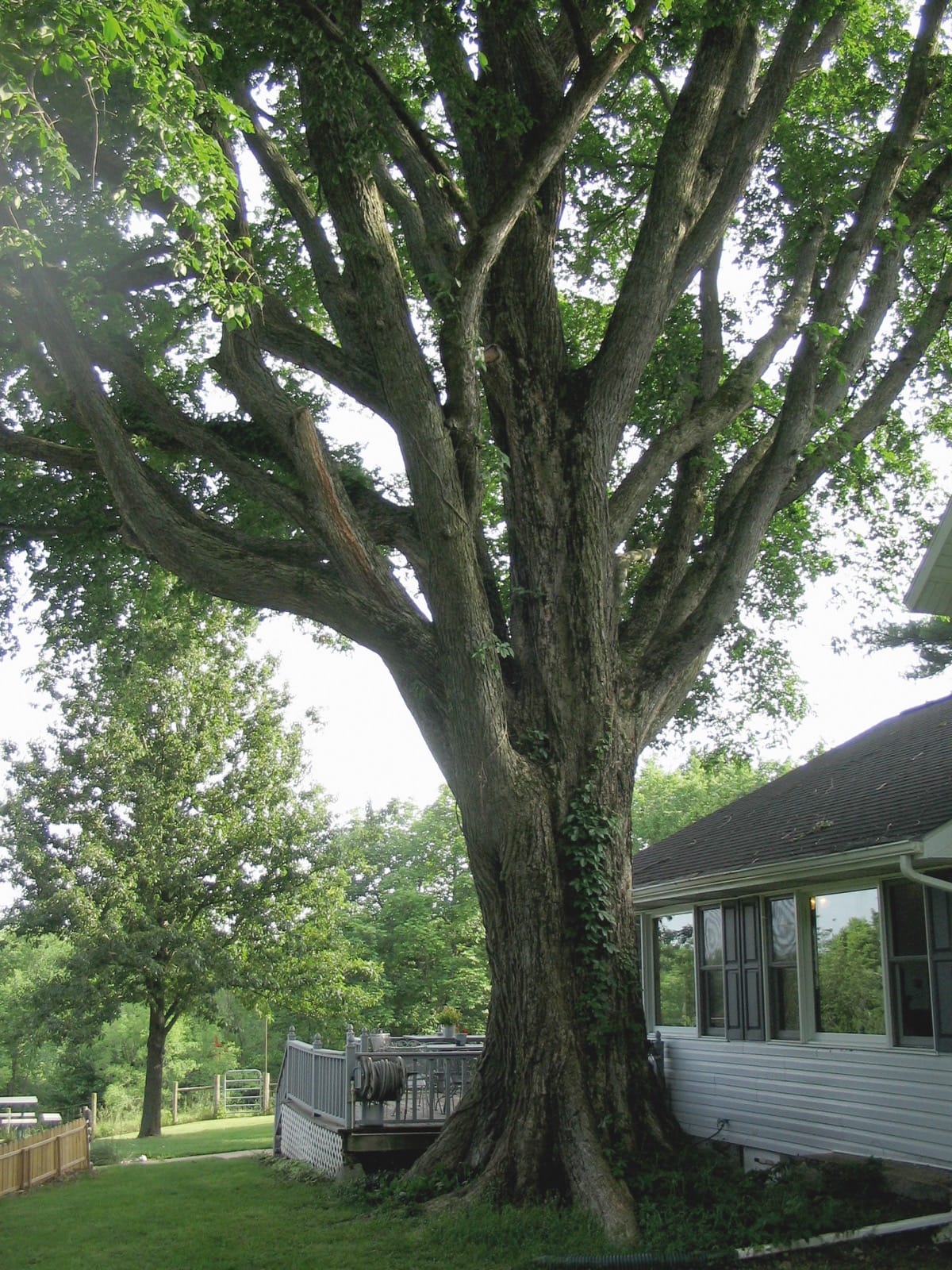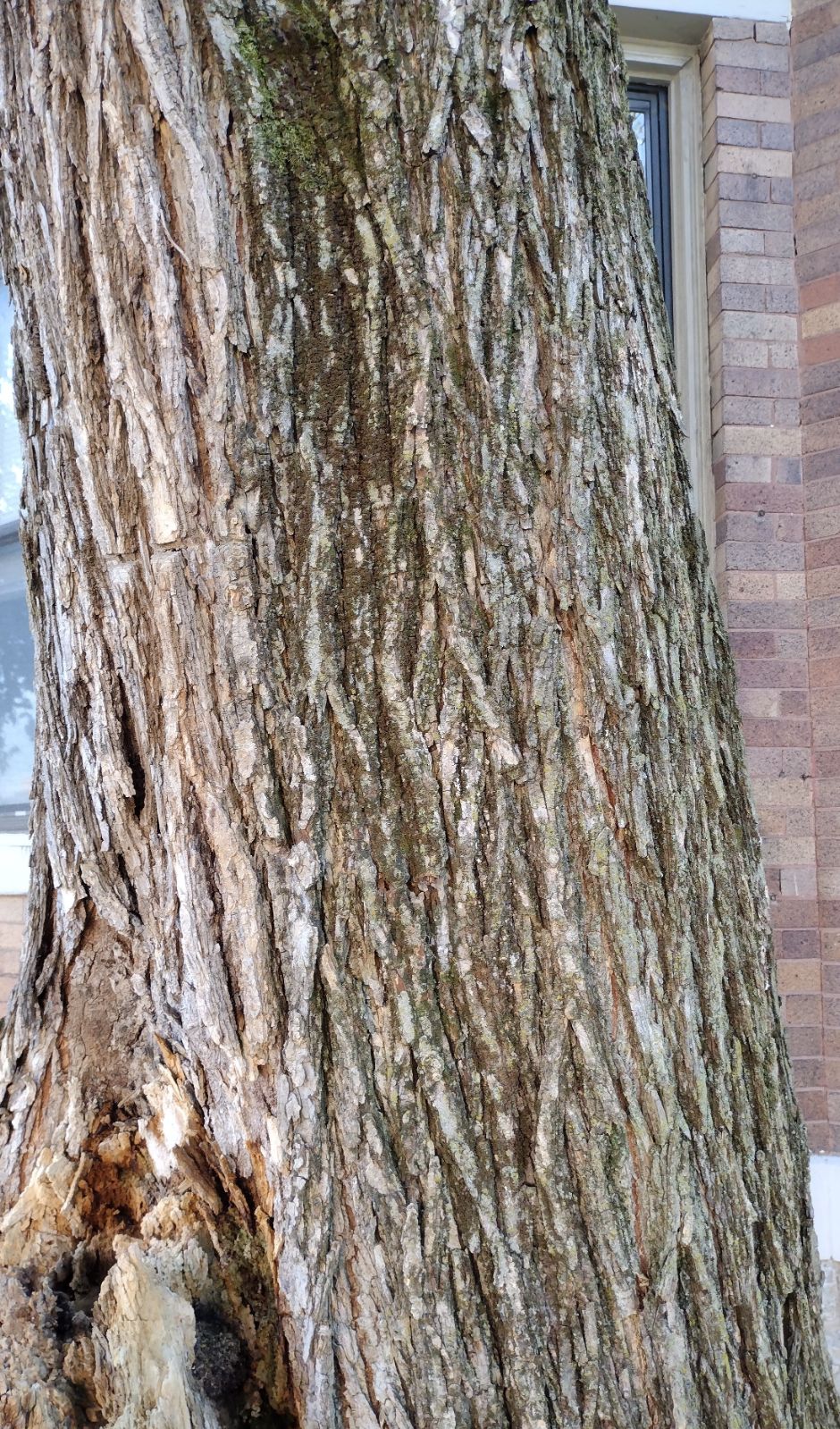Ulmus americana
Credits
Article from Bean's Trees and Shrubs Hardy in the British Isles
Article from New Trees by John Grimshaw & Ross Bayton
Recommended citation
'Ulmus americana' from the website Trees and Shrubs Online (treesandshrubsonline.
Genus
Common Names
- American or white elm
Other taxa in genus
- Ulmus angustifolia
- Ulmus bergmanniana
- Ulmus campestris
- Ulmus canescens
- Ulmus carpinifolia
- Ulmus castaneifolia
- Ulmus chenmoui
- Ulmus coritana
- Ulmus crassifolia
- Ulmus davidiana
- Ulmus elliptica
- Ulmus gaussenii
- Ulmus glabra
- Ulmus glaucescens
- Ulmus × hollandica
- Ulmus japonica
- Ulmus laciniata
- Ulmus laevis
- Ulmus lamellosa
- Ulmus macrocarpa
- Ulmus parvifolia
- Ulmus plotii
- Ulmus procera
- Ulmus pumila
- Ulmus rubra
- Ulmus serotina
- Ulmus szechuanica
- Ulmus thomasii
- Ulmus villosa
- Ulmus 'Viminalis'
- Ulmus wallichiana
- Ulmus wilsoniana
A tree up to 120 ft high, with a trunk 6 ft or more in diameter, forming in isolated positions a wide-spreading head of branches gracefully pendulous at the ends, the whole as much in diameter as the tree is high; bark ashy grey, furrowed; winter buds ovoid, acute or bluntish; young shoots slender, at first downy. Leaves mostly oblong-ovate to elliptic, broadest about the middle, contracted at the apex to a long, slender point, unequal at the base, which is tapered on one side of the midrib, rounded on the other, doubly toothed, 4 to 6 in. long, 1 to 3 in. wide, dark green and glabrous or scabrid above, downy to almost glabrous beneath, lateral veins crowded, straight, running out to teeth; petiole about 1⁄4 in. long. Flowers produced before the leaves. Fruits ripening in the following spring as the leaves unfold, oval or obovate, nearly 1⁄2 in. long, beautifully fringed with pale hairs, the two incurved horns at the apex meeting and forming a small aperture, each fruit on a slender, pendulous stalk about 1 in. long.
Native of eastern and central N. America; introduced in 1752. The American elm is one of the finest and most picturesque trees of its native country, always marked by its beauty and grace of branching, and has been much planted as a shade tree since colonial times, but both in gardens and the wild it has suffered severely from Dutch Elm disease. It is closely allied to the Old World U. laevis.
From New Trees
Ulmus americana L.
American Elm, (American) White Elm
Ulmus americana was described by Bean (B638) and Krüssmann (K405). Formerly one of the most important street and landscape trees in North America, it was very badly hit by DED, and it is nostalgia for this beautiful species that has driven the quest there for DED-resistant elms. The lesson of the effect of planting monocultures of street trees has not really taken root, however; as Dirr (1998) points out, a limited palette of urban trees is still dominant across much of North America, each species in turn becoming plagued by problems.
As a genetically variable natural species, U. americana varies in its susceptibility to DED, and any survivors in generally disease-stricken areas should be regarded with particular interest (Sternberg 2004). A number of surviving clones have been selected and named, but their degree of resistance varies. Lists and brief descriptions are provided by several sources (for example, Dirr 1998, Jacobson 1996, Warren 2000). There is consensus, however, that two introductions from the US Department of Agriculture Agricultural Research Service are the most resistant. ‘Valley Forge’ is the best of all in this respect, closely followed by ‘New Harmony’ from the same source (see Townsend 2000 for the history of the USDA/ARS releases of DED-resistant elms). Named in 1922, before DED became a major problem, ‘Princeton’ from the Flemer family nursery in Princeton, New Jersey was selected on account of its fine growth habit and resistance to damage by the Elm Leaf Beetle. Fortuitously, however, it proved also to be not very susceptible to DED, and has retained its place in the nursery trade and planting lists. All the above-mentioned clones have the classic, desirable vase-shape with arching branches expected of an all-American elm.
‘Princeton’ has recently achieved some fame as the elm selected for planting in an avenue at Highgrove House by HRH The Prince of Wales. Notwithstanding this distinction, as Brookes (2006) has also observed, U. americana was never a great success in the British climate even in pre-DED times (Elwes & Henry 1913), not least because its foliage was more vulnerable to leaf-feeding invertebrates than that of native or archaeophytic elms.




